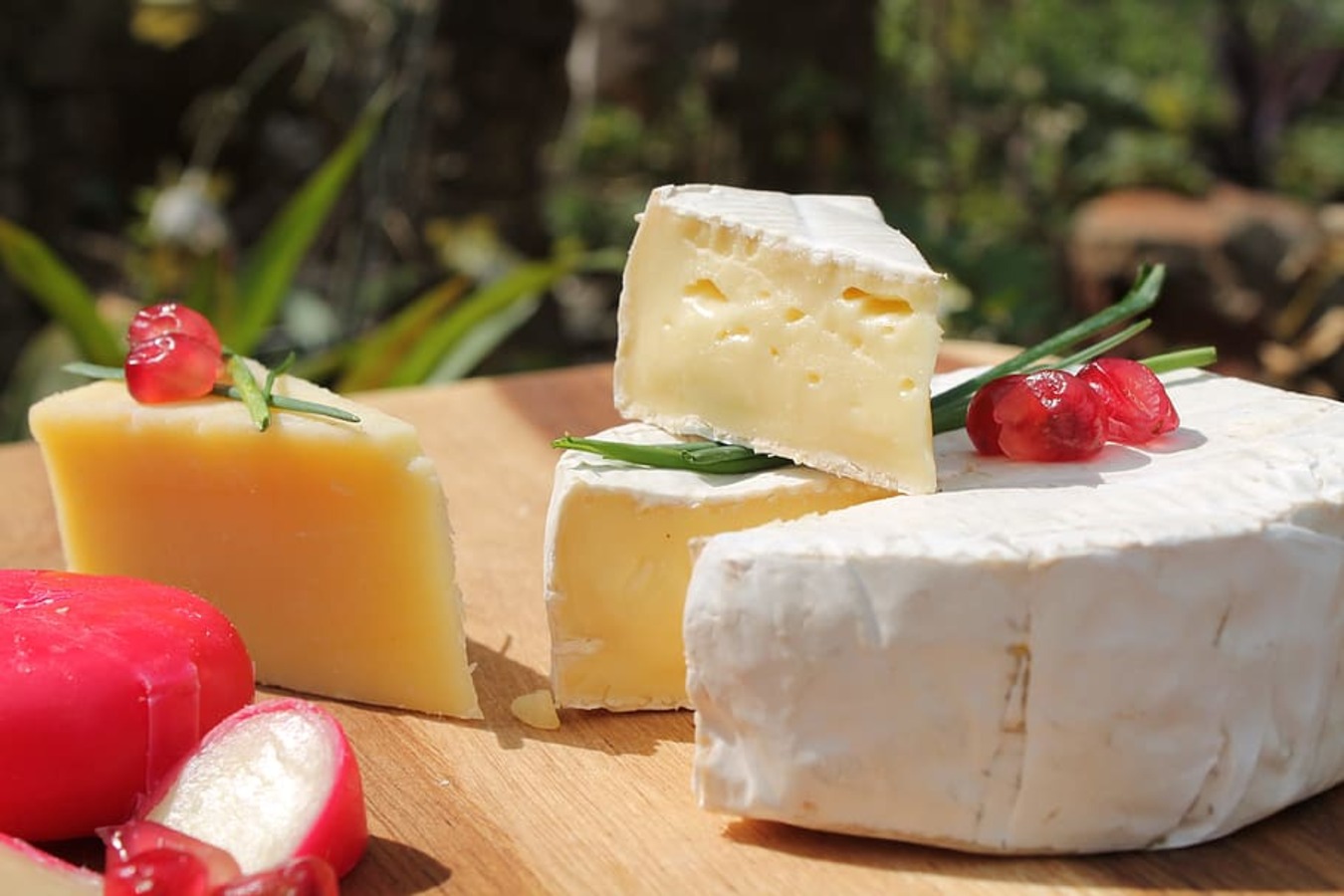
Camembert is a famous French cheese that has captured the hearts and taste buds of people all over the world. This soft, creamy cheese originated in Normandy and is known for its distinct flavor and aroma. Whether enjoyed on its own, spread on a baguette, or melted into a decadent sauce, Camembert is a true culinary delight.
In this article, we will delve into the world of Camembert and uncover 12 fascinating facts about this beloved cheese. From its rich history to its production process, nutritional value, and even some interesting trivia, you will gain a deeper appreciation for Camembert and the effort that goes into creating this culinary masterpiece.
So, if you’re a cheese lover or simply curious about the world of dairy delights, read on to discover some intriguing facts about Camembert!
Key Takeaways:
- Camembert is a famous French cheese with a rich history and creamy texture. It’s versatile, pairs well with fruits and nuts, and has a protected status in the EU.
- Originating in Normandy, Camembert is a soft-ripened cheese with a bloomy white rind. It gained popularity during Napoleon’s time and is best stored in the refrigerator.
Origin
Camembert originated in Normandy, France, in the late 18th century. It was named after the village of Camembert, where a farmer named Marie Harel is said to have first created this cheese.
Traditional Recipe
The traditional recipe for Camembert involves using raw cow’s milk, which gives it a unique flavor and complexity. However, pasteurized versions are also available for those concerned about food safety.
Soft Ripened Cheese
Camembert is classified as a soft-ripened cheese. It is left to age for a few weeks, during which time the cheese develops a bloomy white rind and a creamy, gooey interior.
AOC Certification
Authentic Camembert is granted the Appellation d’Origine Contrôlée (AOC) certification, which ensures that the cheese is made using specific methods and ingredients in the designated region of production.
Versatile Usage
Camembert is a versatile cheese that can be enjoyed in various ways. It can be spread on crusty bread, melted into dishes, or used as a topping for pizzas and burgers.
Pairings
Camembert pairs well with a wide range of accompaniments, such as fresh fruits, nuts, honey, and even a glass of red wine. The combination of flavors enhances the taste of the cheese.
Exported Worldwide
Camembert is exported to many countries around the world, making it easily accessible to cheese enthusiasts everywhere. It has become a favorite in international cuisines.
Cultural Significance
Camembert holds significant cultural importance in France and is considered a symbol of French gastronomy. It is often featured in traditional French dishes and is loved by locals and tourists alike.
Protected Status
Camembert has been granted a Protected Designation of Origin (PDO) status by the European Union, ensuring that only cheeses produced in a specific geographical area can be called “Camembert de Normandie.
Popularized by Napoleon
Camembert gained popularity during the time of Napoleon Bonaparte, who reportedly enjoyed this cheese and contributed to its rise in fame.
Variations
While traditional Camembert is made from cow’s milk, there are variations available that use goat’s milk or a combination of different types of milk. These variations offer unique flavors and textures.
Storage Tips
To preserve the freshness and taste of Camembert, it is recommended to store it in the refrigerator at around 8-10°C (46-50°F). It should be consumed within a week after opening.
These 12 facts about Camembert showcase the rich history, cultural significance, and delicious qualities of this iconic French cheese. Whether enjoyed on its own or incorporated into various dishes, Camembert continues to captivate cheese lovers with its distinctive flavor and creamy texture.
Conclusion
Camembert is not just a delicious French cheese, but a true culinary gem that has captured the hearts and taste buds of people around the world. These twelve facts about Camembert highlight its rich history, unique production process, and undeniable popularity. From its origins in Normandy to its renowned creamy texture and distinct flavor, Camembert continues to be a staple in cheese lovers’ diets.
Whether you enjoy Camembert on its own, melted in a recipe, or paired with your favorite wine, this cheese offers a delightful experience for any food enthusiast. Its versatility makes it suitable for various occasions, from casual gatherings to elegant dinner parties. So next time you’re craving a delectable cheese, reach for Camembert and savor the taste of French culinary tradition.
Don’t miss out on the chance to indulge in this iconic cheese, and take your culinary adventures to new heights with Camembert!
FAQs
1. What is Camembert?
Camembert is a soft, creamy, and slightly tangy French cheese made from cow’s milk. It is named after the village of Camembert in Normandy, France.
2. How is Camembert made?
Camembert is made by adding specific cultures to raw or pasteurized cow’s milk, coagulating it, and then molding and aging it for a few weeks. The cheese undergoes ripening, resulting in its characteristic creamy texture and earthy flavor.
3. How should I store Camembert?
Camembert should be stored in its original packaging or wrapped in wax paper to maintain its moisture. It is best kept refrigerated between 36-46°F (2-8°C) and should be consumed within a week after opening.
4. Can I eat the rind of Camembert?
Yes, the rind of Camembert is safe to eat and often adds to the flavor profile of the cheese. However, some individuals choose to remove the rind before consumption.
5. How do I serve Camembert?
Camembert is typically served at room temperature to enhance its flavors. It can be enjoyed on a cheese platter with fruits and crackers, melted over bread or potatoes, or added to various recipes for a delightful cheesy twist.
6. Is Camembert a vegetarian-friendly cheese?
Camembert is generally not considered vegetarian-friendly as it is made using animal rennet, which is derived from the stomach lining of young calves. However, some versions of Camembert made with microbial or vegetable rennet are available and suitable for vegetarians.
7. Can I freeze Camembert?
It is not recommended to freeze Camembert as it can negatively affect its texture and taste. Freezing can cause the cheese to become crumbly and lose its creamy consistency.
8. What are the variations of Camembert?
While traditional Camembert is made from cow’s milk, there are variations made from different types of milk, such as goat’s milk or sheep’s milk. These variations offer unique flavors and characteristics.
9. Is Camembert considered a healthy cheese?
Camembert, like other cheeses, is a good source of protein and calcium. However, it is also high in saturated fat and should be consumed in moderation as part of a balanced diet.
10. Can I substitute Camembert with other cheeses?
While Camembert has a distinct taste and texture, you can substitute it with other soft, creamy cheeses like Brie or triple-cream cheeses for similar results in recipes.
11. Are there any traditional dishes or pairings for Camembert?
Camembert is often enjoyed with baguettes, crusty bread, or apple slices. It is also a key ingredient in dishes like “tartiflette” and “camembert en croûte.”
12. Can I use leftover Camembert?
Absolutely! Leftover Camembert can be used in various dishes like quiches, omelets, or as a topping for pizzas. Get creative and enjoy the unique flavor of Camembert in new ways!
If you're a cheese lover, why not explore other delightful varieties? Taleggio, a flavorful soft cheese, offers a unique taste experience. For those who adore Camembert, Brie is another French classic worth trying. Lastly, discover the enchanting region of Normandy, where many of these beloved cheeses originate. Each of these topics promises a fascinating journey into the world of cheese and its rich history.
Was this page helpful?
Our commitment to delivering trustworthy and engaging content is at the heart of what we do. Each fact on our site is contributed by real users like you, bringing a wealth of diverse insights and information. To ensure the highest standards of accuracy and reliability, our dedicated editors meticulously review each submission. This process guarantees that the facts we share are not only fascinating but also credible. Trust in our commitment to quality and authenticity as you explore and learn with us.


